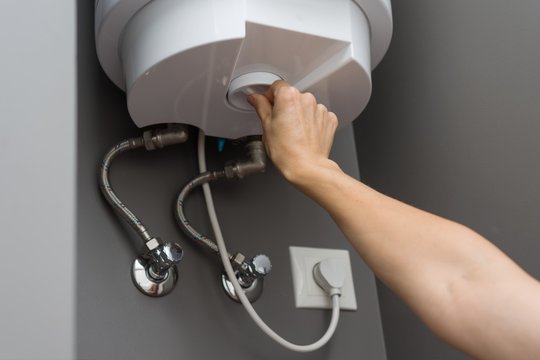Just how do you feel about How to Maintain Your Water Heater & Prolong its Life?
Warm water is vital for daily comfort, whether it's for a revitalizing shower or washing dishes. To ensure your warm water system runs effectively and lasts longer, normal upkeep is key. This write-up gives sensible ideas and insights on how to preserve your home's hot water system to stay clear of interruptions and costly fixings.
Introduction
Maintaining your home's warm water system might seem challenging, yet with a couple of simple actions, you can ensure it runs smoothly for several years ahead. This overview covers everything from understanding your warm water system to do it yourself upkeep pointers and understanding when to call in expert help.
Value of Maintaining Your Warm Water System
Normal maintenance not only extends the lifespan of your warm water system yet additionally guarantees it runs efficiently. Overlooking upkeep can bring about lowered efficiency, greater power bills, and also premature failure of the system.
Indicators Your Warm Water System Needs Upkeep
Recognizing when your hot water system requires focus can avoid significant problems. Look out for indications such as irregular water temperature level, unusual sounds from the heating system, or corroded water.
Understanding Your Hot Water System
Prior to diving right into upkeep tasks, it's valuable to recognize the standard components of your hot water system. Normally, this consists of the water heater itself, pipes, anode rods, and temperature level controls.
Monthly Maintenance Tasks
Routine regular monthly checks can aid capture small issues prior to they escalate.
Flushing the Water Heater
Flushing your water heater eliminates debris build-up, enhancing performance and lengthening its life.
Monitoring and Replacing Anode Rods
Anode rods prevent corrosion inside the tank. Examining and replacing them when worn is important.
Checking and Readjusting Temperature Level Setups
Changing the temperature settings guarantees ideal performance and security.
DIY Tips for Maintenance
You can perform several upkeep jobs on your own to maintain your warm water system in top condition.
Checking for Leaks
Routinely evaluate pipes and links for leakages, as these can bring about water damage and greater expenses.
Examining Stress Alleviation Valves
Evaluating the pressure safety valve guarantees it operates properly and stops extreme pressure build-up.
Shielding Pipes
Insulating warm water pipelines decreases heat loss and can save power.
When to Call an Expert
While DIY upkeep is valuable, some problems need professional proficiency.
Complex Issues Calling For Expert Help
Instances consist of major leakages, electrical troubles, or if your hot water heater is regularly underperforming.
Regular Expert Maintenance Conveniences
Expert maintenance can include comprehensive examinations, tune-ups, and making sure compliance with safety and security requirements.
Conclusion
Normal upkeep of your home's hot water system is important for performance, durability, and price savings. By adhering to these suggestions and recognizing when to seek professional assistance, you can ensure a trustworthy supply of hot water without unanticipated disturbances.
How to Maintain an Instant Hot Water Heater
Before tinkering with your hot water heater, make sure that it’s not powered on. You also have to turn off the main circuit breaker and shut off the main gas line to prevent accidents. Also turn off the water valves connected to your unit to prevent water from flowing into and out of the appliance. 2. When you’re done, you have to detach the purge valves’ caps. These look like the letter “T†and are situated on either side of the water valves. Doing so will release any pressure that has accumulated inside the valves while at the same time avoid hot water from shooting out and burning your skin. 3. When the purge valves’ caps are removed, you have to connect your hosing lines to the valves. Your unit should have come with three hoses but if it didn’t, you can purchase these things from any hardware or home repair shops. You can also get them from retail stores that sell water heating systems. Read the user’s manual and follow it to complete this task properly. When the hosing lines are connected, open the purge port’s valves. 4. You should never use harsh chemical cleaners or solutions when cleaning your unit. Make use of white vinegar instead. It should be undiluted and you’ll probably use about 2 gallons. 5. Now flush your water heater. This task should probably take about 40 minutes. We can’t give you specific directions for this because the procedure is carried out depending on the type, model and brand of your heater. With that being said, refer to the user’s manual. 6. When you’re done draining the unit, you have to turn off the purge port valves again. Remove the hosing lines that you earlier installed on each of the water valves. Put the valve caps (purge port) back in their respective places and be very careful so as not to damage the rubber discs that are found inside these caps. 7. Now that everything’s back in place, check your user’s manual again to find out how to reactivate your water heating system. 8. Once it is working, turn one of your hot water faucets on just to let air pass through the heater’s water supply pipes. Leave the tap on until water flows smoothly out of it. https://www.orrplumbing.com/blog/2014/september/how-to-maintain-an-instant-hot-water-heater/

I recently found that blog posting about How to Maintain a Hot Water Heater in a Few Simple Steps while doing research the web. Enjoyed our article? Please share it. Let others locate it. Thanks so much for taking the time to read it.
Request Appointment